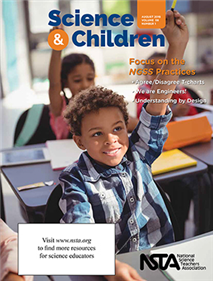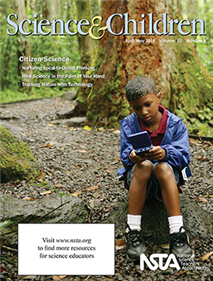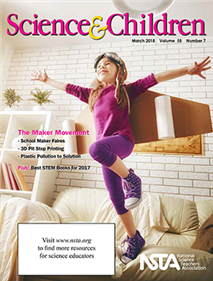All Disciplinary Core Ideas resources
Blog Post
Exploring Structure and Function in Insects
As an entomologist, one of my greatest challenges is trying to overcome my students’ feelings of fear and disgust regarding insects. Insects often have negative images in society. Walk through any toy store, and you will likely find plastic insects...
By Cindy Workosky
Blog Post
Using Toxic Algal Blooms to Teach Structure and Function
Young children often experience a developmental stage in which they question everything. Why aren’t there dinosaurs anymore? Why do cats purr? Why are some potato chips green? They go from simply observing their surroundings to analyzing, experimen...
By Rebecca Brewer
NSTA Press Book
Reading Nature: Engaging Biology Students With Evidence From the Living World
By making room for this book in your curriculum, you’ll have a fresh way to motivate your students to look at the living world and ask not only “Why?” but also “How do we know?” Unique in both its structure and approach, Reading Nature is a...
By Matthew Kloser, Sophia Grathwol
Journal Article
The Early Years: Making Sense of Their World
This column discusses resources and science topics related to students in grades preK to 2. In this issue students document the apparent movement of the Sun by making and recording two daily observations for a period of time and looking for a patter...
Blog Post
Global Thinking Inside and Outside the Classroom
Dynamic Equilibrium. These two words represent what is essential in teaching Earth science: the idea that forces are constantly working against one another, but often do so in ways that nearly counteract one another....
By Cindy Workosky
NSTA Press Book
Preparing Teachers for Three-Dimensional Instruction
It’s not enough for teachers to read through the Next Generation Science Standards (NGSS) and correlate their content to the established curriculum. Teachers must prepare to make the vision of the NGSS come alive in their classrooms. Editor Jack Rh...
Journal Article
The Early Years: Introducing Children to Phenology
This column discusses resources and science topics related to students in grades preK to 2. This issue shares an activity meant to provide children with the experiences of collecting data by making observations in nature over time and connecting with...
Journal Article
Editor’s Note: Making Sense of Makerspaces
Science and Children’s editor shares thoughts regarding the current issue....
Journal Article
Teaching Teachers: Designing an NGSS Learning Pathway
This column enhances the repertoire of preservice and inservice teachers. How informal institutions can help teachers implement the NGSS...
Blog Post
Seeds of Science, Roots of Reading Program Helps Students Develop Explanations
The Next Generation Science Standards (NGSS) encourage three-dimensional thinking in students. 3-D thinking, and the process of developing scientific explanations, are curiosity-driven: They involve wondering, posing questions, and making observation...
By Jim McDonald






